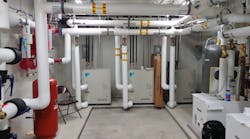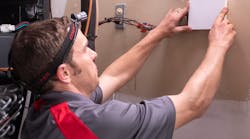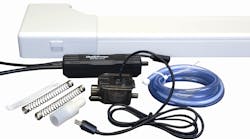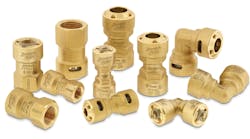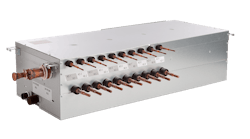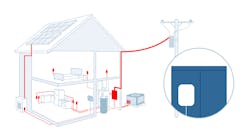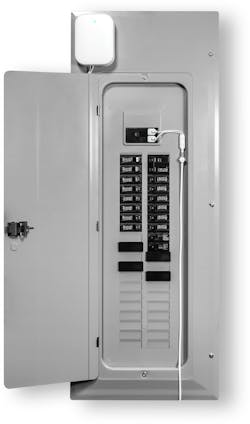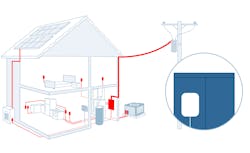by Amena Ali
For consumers, the increasingly competitive landscape for residential HVAC contractors is easy to see: more HVAC trucks rolling around their neighborhood, more television ads, more fliers in the mail and ultimately more options when it comes to their heating and cooling needs.
For HVAC service providers, the intense competition – from national and regional chains to small family-run shops - requires operating with greater efficiency and delivering a superior customer experience. HVAC contractors – mid- to large-sized providers in particular – recognize that innovation and a technology-driven market approach will pay far greater dividends than engaging in a race to the bottom on price that damages the business over the long run.
This is why contractors are increasingly evaluating the benefits of sensor-based approaches that can connect even legacy HVAC systems, in turn addressing the current lack of insight contractors have into how the HVAC systems they install and maintain are performing, high customer churn, weak customer engagement and ultimately, a less-than-optimal product experience when it comes to consumer costs and comfort.
Connecting HVAC services can provide a competitive advantage to contractors through the following capabilities:
1. Gain HVAC performance insights
Residential HVACR contractors recognize that a growing subset of existing and prospective customers are adopting connected thermostats and other smart home technology. They have watched as retailers jump in more aggressively to sell direct-to-consumer smart thermostats, locks, light bulbs, etc.
But more than 100 million U.S. households do not have a single smart home device according to Parks Associates, and thus have no way to monitor the power usage and health of their non-connected appliances like HVACs, refrigerators, dishwashers and washer/dryers. Overall, a whopping 99% of appliances and devices in the home are not connected.
This means consumers do not know if their HVAC is working efficiently, let alone if it is about to breakdown. Ditto for the hot water heater, washer, dryer, dishwasher, etc. The failure of any one of these appliance is a major inconvenience and significant expense for consumers in any scenario, and lack of consumer insights into how much energy both connected smart home devices and legacy non-connected appliances consume is equally problematic.
For HVAC contractors however, performance insights are possible, even for homes with legacy “non-connected” heating and cooling units, because every appliance in the home is connected --- to the power network in the home that feeds the electricity to power them. Connecting to that network at the electrical panel which serves power to every appliance in the home, and measures power consumption down to the sub-second level, enables one sensor to turn all home appliances into connected appliances. This is the promise connected HVAC can deliver.
Armed with the diagnostics Connected HVAC sensor services can provide, such as startup capacitor failure, service technicians can readily identify faults and deterioration remotely --- so they or the salesperson can contact the homeowner to suggest remediation options. The sensor and associated software platform means that service providers can monitor the performance of customer HVACs remotely by reviewing their health and status.
2. Boosting Operational Efficiency
In today’s competitive climate, contractors cannot afford to operate inefficiently when it comes to servicing customer HVAC issues. Each truck roll requires labor, fuel and maintenance, along with the opportunity cost of diverting technicians to repair jobs rather than new customer installations. The issue is compounded if contractors roll a truck without providing technicians with the equipment and information they need to quickly and successfully service a customer.
Home service providers can grow their business and reduce operational costs by putting HVAC performance insights to work. For instance, contacting customers to remediate faults and ensuring that the service tech has the right parts on the truck improves operational efficiency and can pre-empt most significant appliance breakdowns that cost customers money.
3. Enhancing the Customer Experience
Numerous surveys indicate customer experience will overtake price and product as the key brand differentiator in the next 2-3 years. A key component of the customer experience is information: the ability to leverage valuable insights to inform and engage consumers. In the case of HVAC contractors, this means home energy intelligence that drives greater loyalty for repairs, replacements and ongoing service agreements.
Higher end HVAC units have monitoring and reporting capabilities built in, but the vast majority of systems lack monitoring and diagnostic capabilities, which means that a simple “retrofittable” connection service is key.
Connecting HVAC services can enable contractors to provide consumers with easily digestible performance deterioration trends and predictive insights on failures for legacy appliances while enabling homeowners to receive customer-branded emails informing them on the health of their HVAC system and their whole home energy usage. These insights provide consumers with peace of mind when you can alert them to the performance and efficiency of their HVAC, the single largest user of energy in the home and key to comfort, on a real-time basis.
For residential HVAC contractors, it isn’t just about driving adoption of new smart home devices and products. Instead, the path to growing revenues, customers and a delivering a better customer experience centers on data. This data is meaningful and actionable and informs consumers on the power usage and health of these appliances in order to help them reduce energy costs and preempt appliance breakdowns.
Amena Ali is chief revenue officer at Whisker Labs. Find Whisker Labs online at www.whiskerlabs.com
